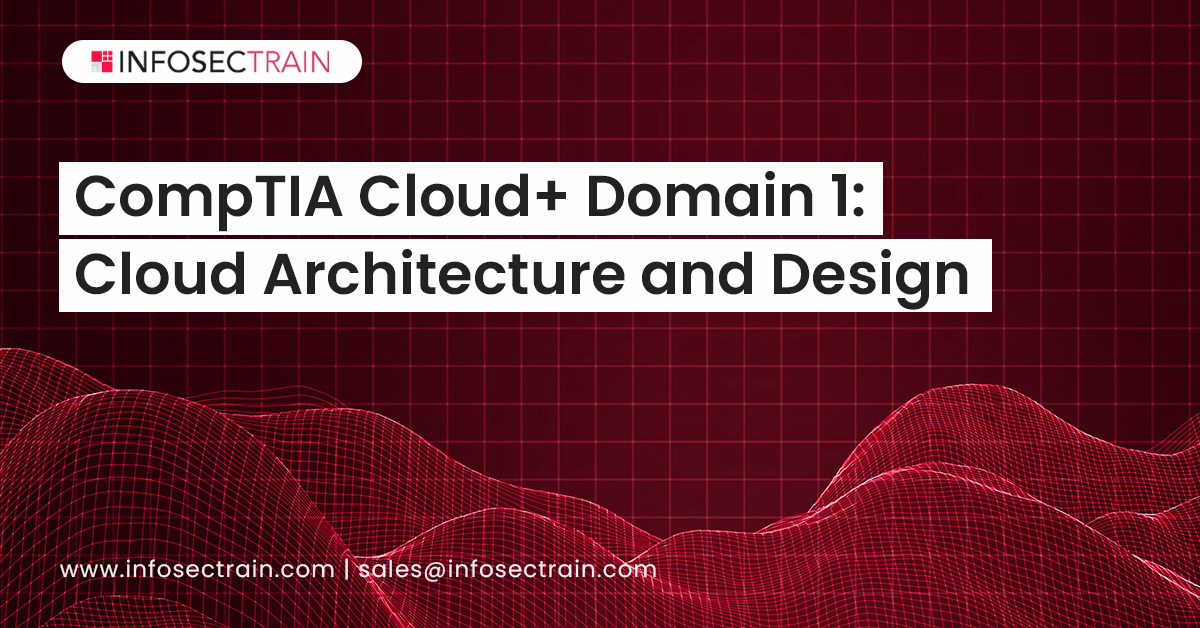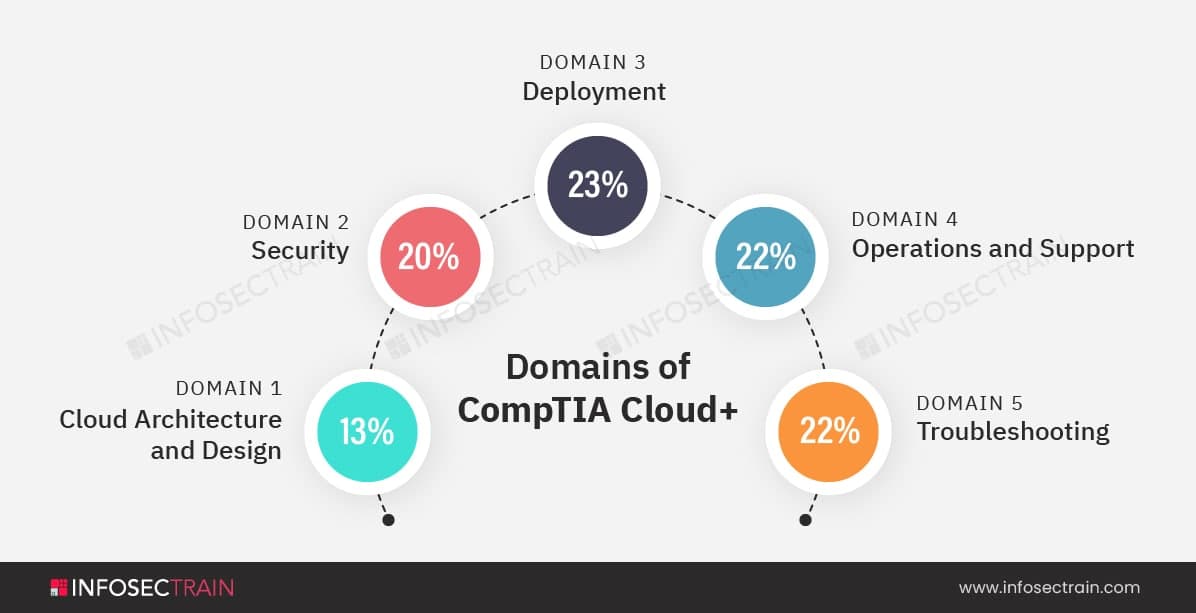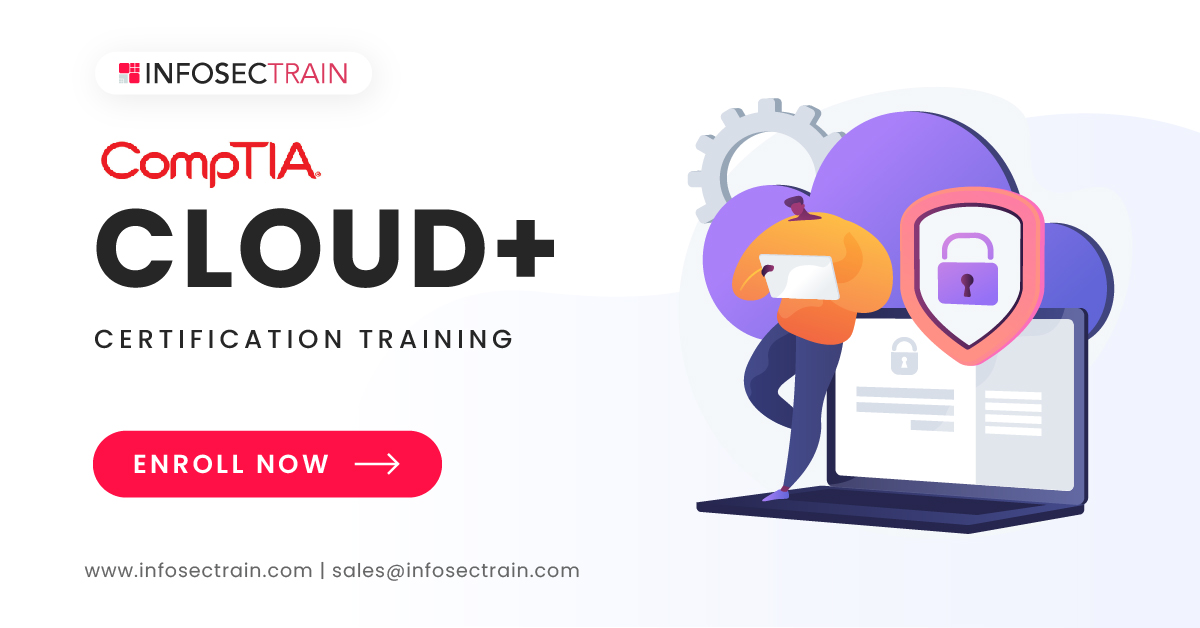CompTIA Cloud+ Domain 1: Cloud Architecture and Design
The new CompTIA Cloud+ certification combines the two most popular information technology disciplines: cloud technology and cybersecurity. The Cloud is a unique and never-ending dynamo whenever we talk about technology. Cybersecurity has long been a hot topic in the workplace and the domains of data and information. As a result, this is an excellent chance for you to break into the cloud employment market with the knowledge of cloud security.

Cloud+ Certification
The CompTIA Cloud+ certification certifies that a person knows the business and technical aspects of Cloud computing, as well as the considerations that affect migrating to and maintaining the Cloud. By addressing the growing range of experience, skills, and abilities required of system administrators, Cloud+ verifies what is necessary to perform productively in data center jobs. According to CompTIA Cloud+, cloud-based infrastructure services are becoming an increasingly essential element of an organization’s IT activities. It’s the only vendor-agnostic, performance-based certification covering more than one vendor or functionality, such as security or networking, to help you get the most out of cloud infrastructure services.
Domains of the CompTIA Cloud+

CompTIA Cloud+ certification comprises a total of five domains:
- Domain 1: Cloud Architecture and Design 13%
- Domain 2: Security 20%
- Domain 3: Deployment 23%
- Domain 4: Operations and Support 22%
- Domain 5: Troubleshooting 22%
We will discuss the first domain that is ‘Cloud Architecture and Design.’
Cloud Architecture and Design
The first domain of Cloud+ is Cloud Architecture and design and comprises 13% weightage in the exam. This holds the least weightage among all the domains, but it is an essential domain because this is where the journey of Cloud+ begins. This domain provides you an overview of all the fundamentals of the Cloud, such as cloud models, efficient planning, availability and scaling in cloud environments, and design analysis. In this, we will learn about:
1. Compare and contrast the different types of cloud models
This topic provides an overall idea of the cloud models like deployment, service, and shared responsibility model, while it also takes us through advanced cloud services. The deployment model incorporates private, public, hybrid, community, multitenancy, multi-cloud, and Cloud within a cloud. The service model comprises the most important aspect of Cloud that is the SaaS (Software-as-a-Service), PaaS (Platform-as-a-Service), and IaaS (Infrastructure-as-a-Service) models. The advanced cloud services will provide you the knowledge of IoT (Internet of Things), Serverless, and Machine Learning(ML)/Artificial Intelligence(AI).
2. Explain the factors that contribute to capacity planning
This subdomain will provide in-depth knowledge of requirements, licensing, and trend analysis, along with briefing you about standard templates, user density, system load, and performance capacity planning. In requirements, you’ll understand the hardware, software, budgetary, and business analysis requirements. Under licensing, you’ll learn about various kinds of licensing strategies like per-user licensing, socket-based licensing, volume-based licensing, core-based licensing, and subscriptions. The trend analysis will equip you with the knowledge of baselines, patterns, and anomalies.
3. Explain the importance of high availability and scaling in cloud environments
In this sub-domain, we will discuss hypervisors, oversubscription, regions and zones, applications, containers, clusters, high availability of network functions, avoid single points of failure, and scalability. Hypervisors incorporate affinity and anti-affinity, while the oversubscription explains to you about compute, network, and storage. The high availability of network functions will provide you an understanding of network devices such as switches, routers, load balancers, and firewalls. Scalability will explain to you all about auto-scaling, horizontal scaling, vertical scaling, and cloud bursting.
4. Given a scenario, analyze the solution design in support of the business requirements
In this sub-domain, we will learn about the requirements analysis in detail, which will cover the topics like software requirement, hardware requirement, integration requirement, budgetary requirement, compliance requirement, Service-Level Agreement (SLA), user and business needs, security requirement, and the network requirements such as sizing, subnetting, and routing. We also learn about environments that will cover the topics like development, Quality Assurance (QA), staging, blue-green, production, and disaster recovery. This sub-domain will also explain the standard testing techniques that incorporate vulnerability testing, penetration testing, performance testing, regression testing, functional testing, and usability testing.
CompTIA Cloud+ with InfosecTrain
For expert knowledge and an in-depth grasp of Cloud security, consider taking the CompTIA Cloud+ Certification Training Course from InfosecTrain. Instructors that are highly trained and experienced are in charge of this training. With our well-versed and experienced teachers, we are among the leading training providers in the globe. The courses will assist you in grasping the fundamental principles and providing a thorough understanding of the subject. This certification is well worth every dollar and minute you put into it.








 1800-843-7890 (India)
1800-843-7890 (India)